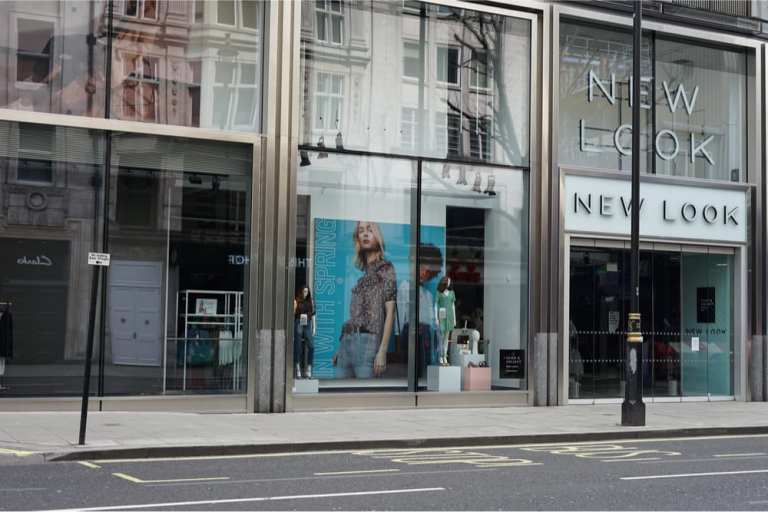Retailers And Landlords Work Together (Not Always Happily) To Save Brick-And-Mortar Stores

U.K. retail chain New Look made headlines this week for striking a deal to effectively receive a three-year rent holiday on 68 of its stores and massive rent reductions on more than 400 others. The deal allows the struggling apparel seller to potentially stay alive and keep roughly 11,000 employees on the payroll as New Look works to weather the COVID-19 pandemic.
“We look forward to working closely with our landlords and all creditors to ensure we can navigate the uncertain times ahead together,” said CEO Nigel Oddy, following creditor approval of New Look’s company voluntary arrangement (CVA), which is somewhat similar to a U.S. Chapter 11 bankruptcy reorganization.
Under the CVA, New Look’s rents will fall between 2 percent and 12 percent on many locations, according to the Guardian news site. In return, the chain’s landlords will get the ability to end New Look leases in the event that higher-paying tenants come along.
New Look is just one of many retailers around the globe that’s working with landlords to reduce rents and stay alive, sometimes by threatening to use the bankruptcy process to get out of leases or cancel back rent. Lots of big-name retailers have gone on the record during the pandemic to say they’d pay either reduced rent or none at all as they struggled to survive the cataclysmic income hit their businesses have seen.
For example, Nordstrom announced in July that it would only pay half of its rent for the balance of 2020 — bad news for landlords, but at least Nordstrom is still paying half. The Gap, Famous Footwear, Bed Bath & Beyond and AMC movie theaters have fallen behind on or fully suspended rent payments.
As of summer’s start, retail landlords reported only collecting roughly 65 percent of the rents due, although many were looking for signs of a rebound — which, in fairness, weren’t totally absent. Commercial landlords finally got some good news in July as rent collections for retail properties increased by double digits compared to May and June.
A survey by Datex Property Solutions found that retail rent collections rose to 68.8 percent in mid-July, a roughly 15 percent increase compared to mid-June and big 36.6 percent increase compared to mid-May. According to researchers, the reopening of stores was the critical factor.
“As we have gotten our arms around how to reopen the economy in the face of an active pandemic, more retail categories have been able to return to partial or full operations,” Mark Sigal, CEO of Datex Property Solutions, told GlobeSt.com. “This has enabled more retailers to generate income, and as we know, income is the oxygen needed to pay rent.”
But store reopenings have turned out to be more complicated than they first appeared, as many consumers seem to have become habituated to the digital shift. Many seem less than fully motivated to run back into physical stores in the absence of a COVID-19 vaccine.
Recent reports also indicated an uptick in the number of retailers using bankruptcy as a tool to escape their lease agreements.
Bankruptcy laws can give retail tenants the power to get “cramdowns,” where a judge will let them get out of leases or rent payments. However, experts say that could simply force some landlords to miss mortgage payments on properties, pushing them into loan defaults.
“This is now black-letter law — a debtor can ‘cram down’ a landlord,” Melanie Cyganowski, a partner at law firm Otterbourg PC, told Bloomberg. “If this becomes a tsunami of retailers rejecting their leases, it’s going to trigger another part of the sea change — the mortgages held by the landlords.”
Landlords aren’t happy about that, as Melanie Leech, chief executive of landlords’ trade body British Property Federation, told the Guardian regarding New Look’s bailout.
“We support this rescue culture, but [the New Look] result clearly demonstrates how the process is now wrongfully being used as a weapon by businesses to rip up leases permanently,” she said.
As New Look’s case makes clear, the situation remains fraught and complex for both retailers and landlords. But absent easy fixes — of which there are clearly none — both groups have very little choice but to negotiate with each other … and wait for the pandemic to end and consumers to (hopefully) rediscover a love of physical shopping.